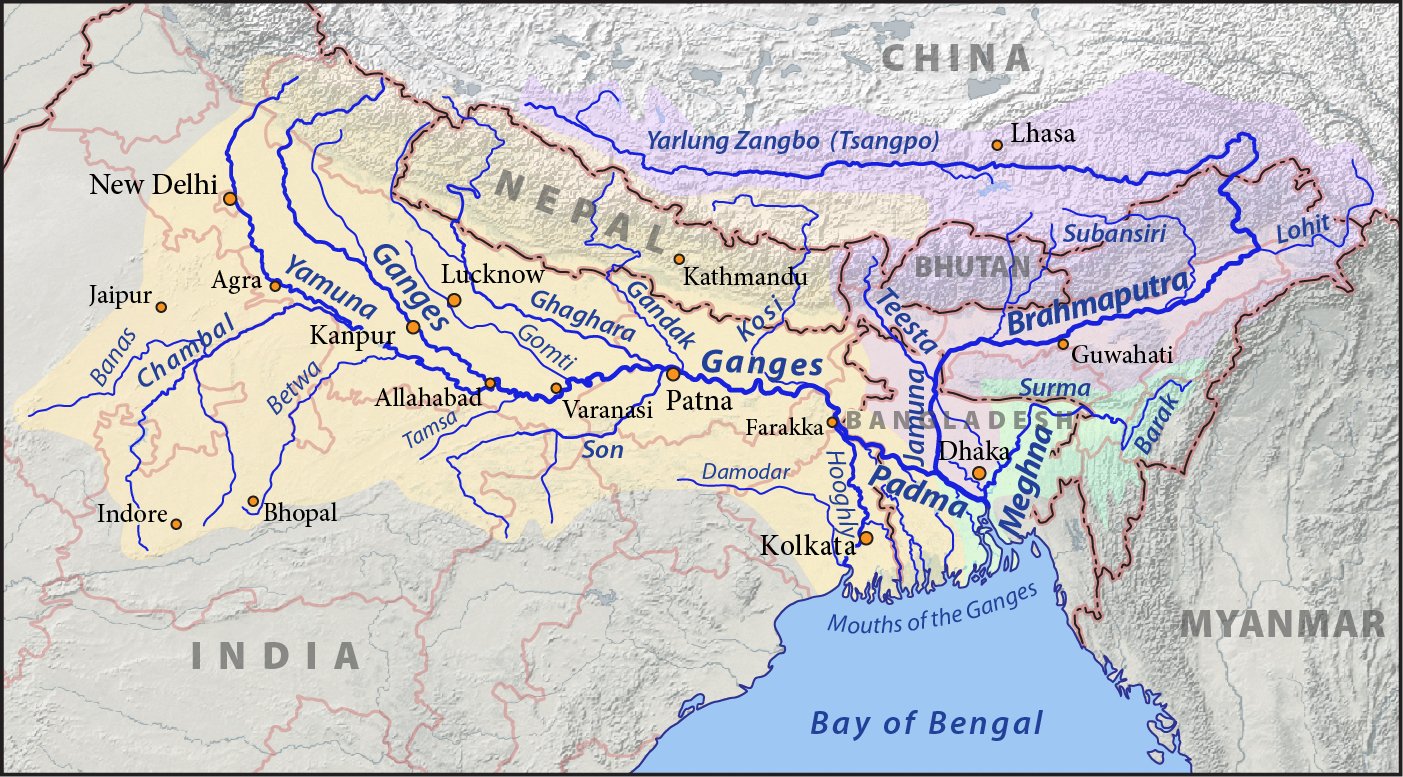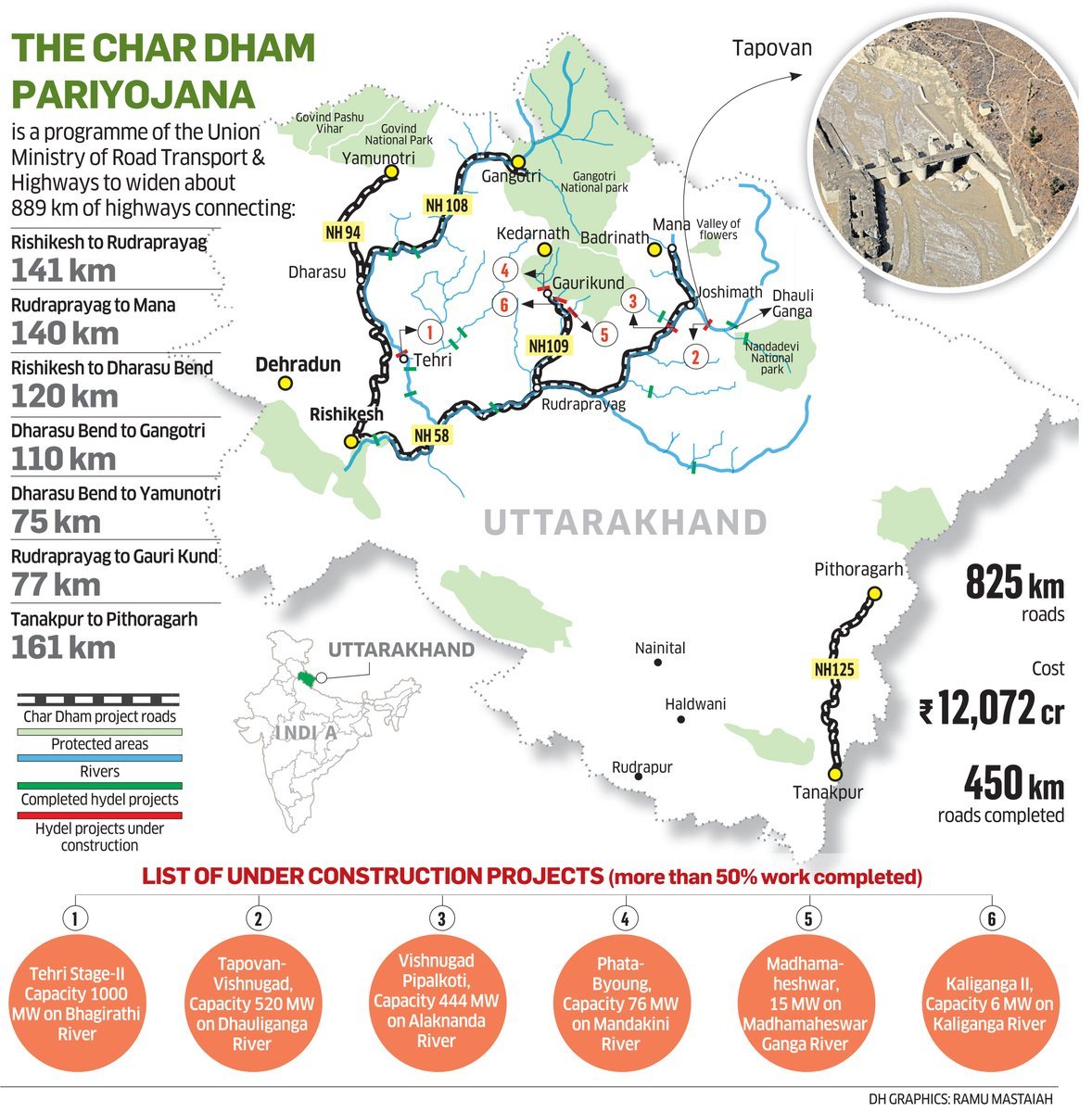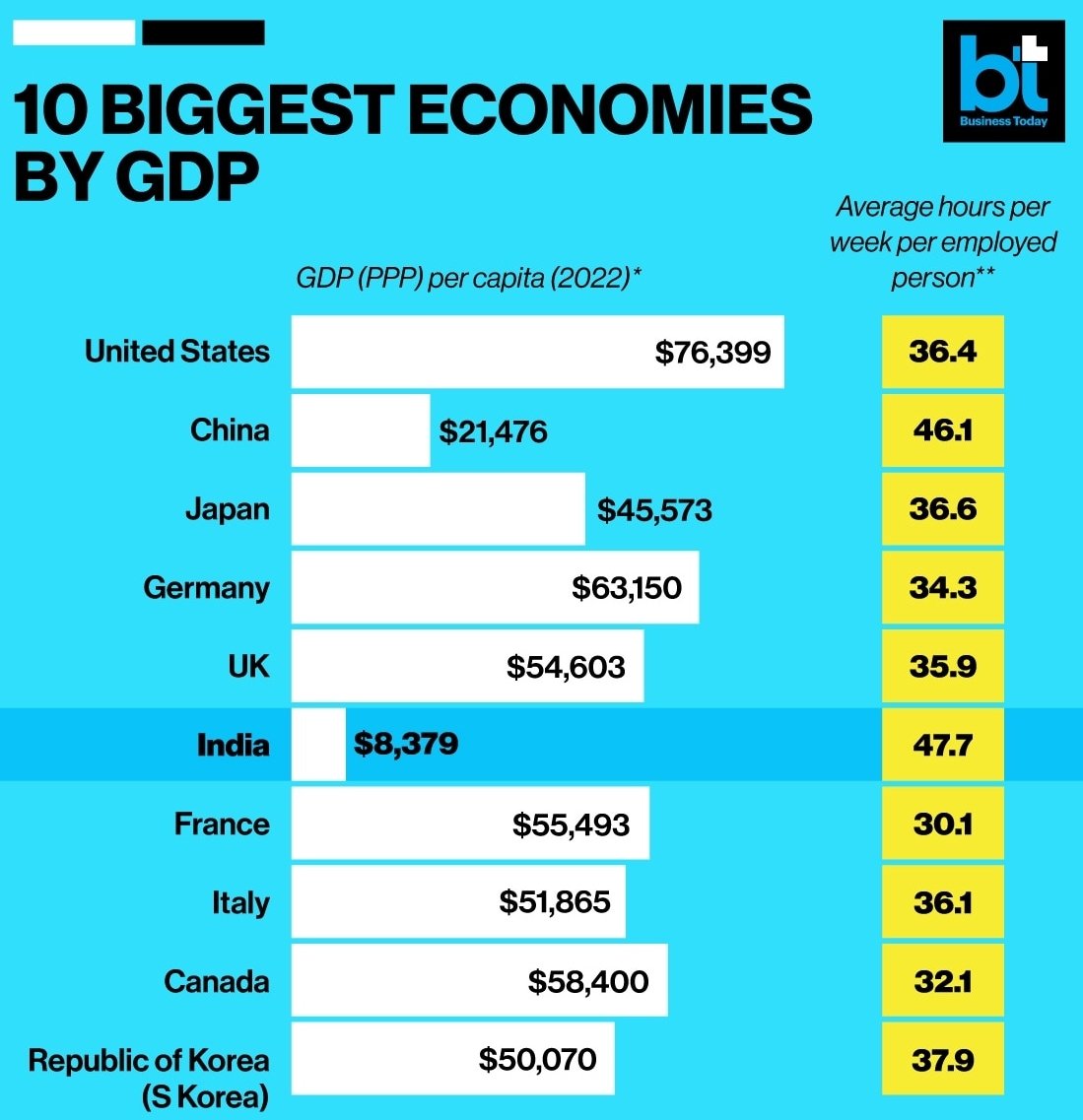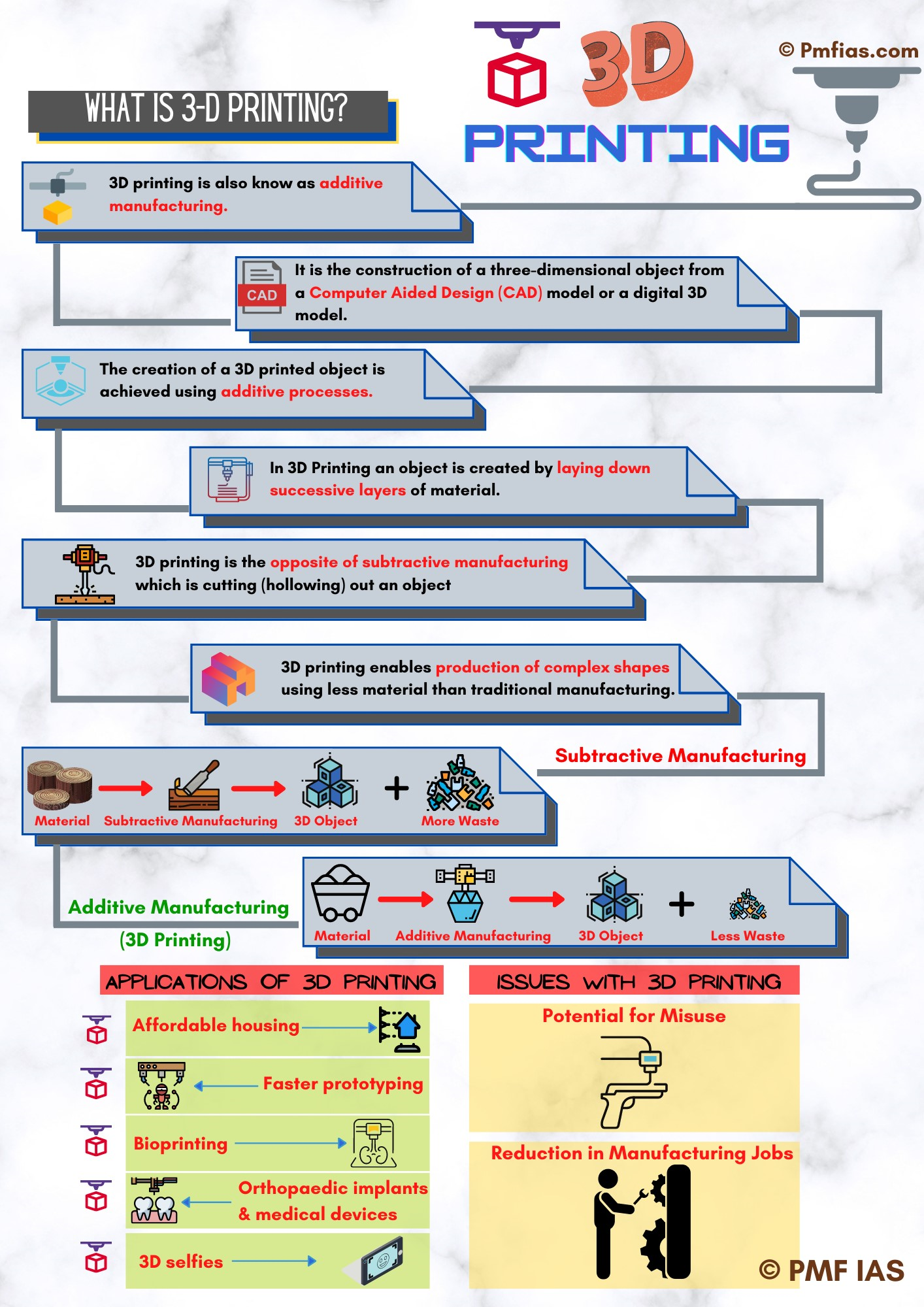
Current Affairs November 07, 2023: Snake Venom as Recreational Drug, Women in Water Governance, Adaptation Gap, OECD Migration Outlook
Subscribers of "Current Affairs" course can Download Daily Current Affairs in PDF/DOC
Subscribe to Never Miss an Important Update! Assured Discounts on New Products!
Must Join PMF IAS Telegram Channel & PMF IAS History Telegram Channel
{GS1 – Geo – HG} OECD International Migration Outlook
- Context (DTE): Organisation for Economic Co-operation and Development (OECD) recently released International Migration Outlook 2023.
Highlights of the Report
- OECD countries received 6 million+ permanent immigrants in 2022 (excluding Ukrainian refugees).
- The number of admissions of international students neared two million for the first time.
- In 2022, India was the largest migration source to OECD countries.
- Family migration remained the primary category of entry for new permanent-type migrants.
- The employment rate of migrants improved in all OECD countries except Poland.
|
Organization for Economic Co-operation and Development (OECD)
|
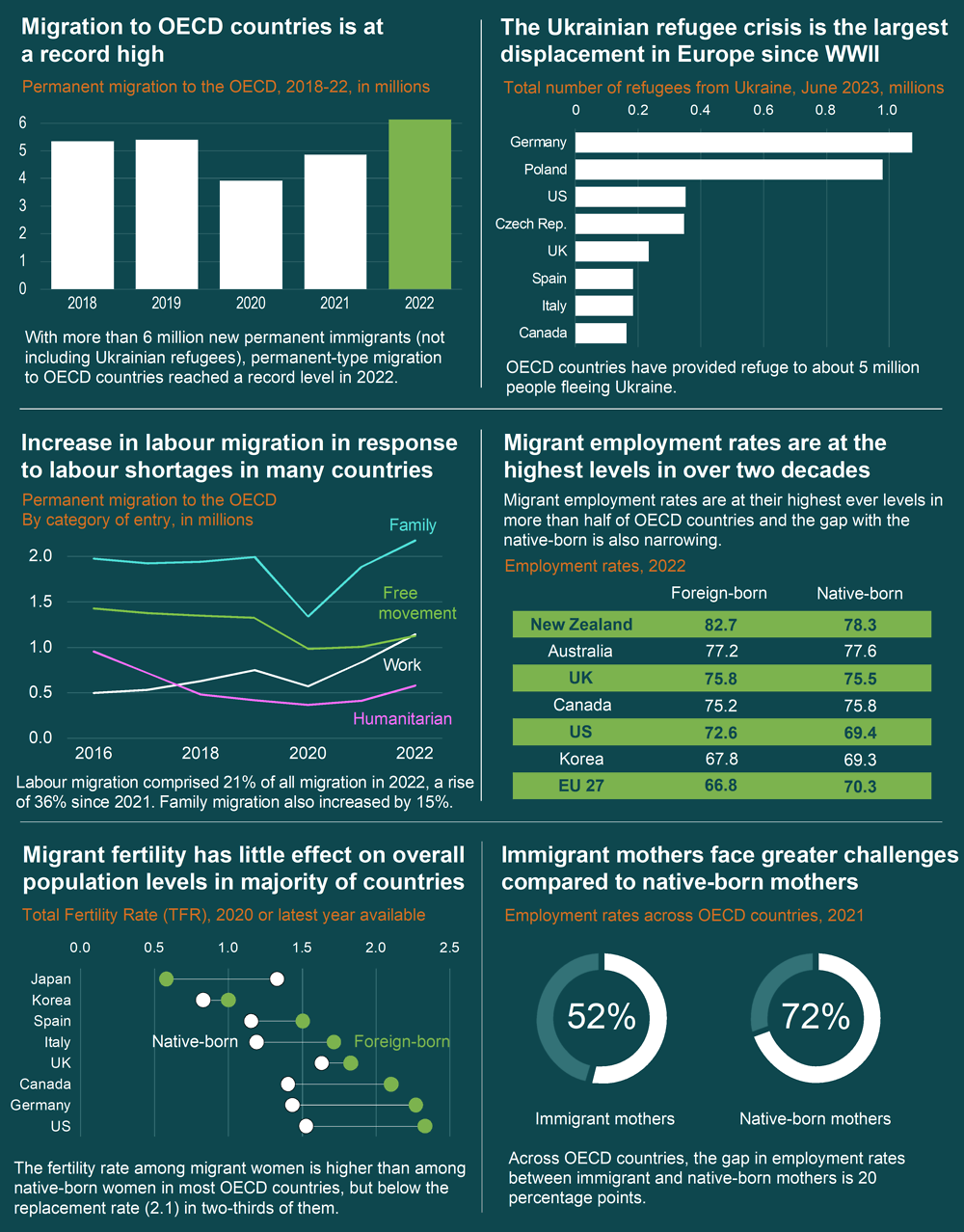
{GS2 – MoCAFPD – Schemes} PM-GKAY
- Context (TH | IE): GoI has extended the Pradhan Mantri Garib Kalyan Anna Yojana (PM-GKAY) (free food grains scheme) under the National Food Security Act (NFSA), 2013 for the next five years.
Pradhan Mantri Garib Kalyan Anna Yojana (PM-GKAY)
- PM-GKAY was launched in 2020 as a COVID-19 relief measure.
- Under the PMGKAY, five kg of food grains per person per month are provided free to all beneficiaries covered under the NFSA. This was in addition to the food grains already provided under NFSA.
- Under the NFSA, the government provides:
- Five kilograms of food grains per person per month at Rs one/kg for coarse cereals, Rs two/kg for wheat, and Rs three/kg for rice.
- 35 kg of food grains per month to the families covered under Antyodaya Anna Yojana (AAY).
Merger of PM-GKAY and NFSA
- In 2022, PMGKAY was merged with NFSA and extended until December 2023.
- Under this merger, the entire food grains under PM-GKAY and NFSA were made free of cost.
National Food Security Act
Coverage under NFSA
|
{GS2 – MoHUA – Initiatives} AMRUT
- Context (PIB): Ministry of Housing and Urban Affairs (MoHUA) is launching the “Women for Water, Water for Women” campaign under AMRUT.
Atal Mission for Rejuvenation and Urban Transformation (AMRUT)
- AMRUT Mission is a centrally sponsored scheme launched under MoHUA in 2015.
- Aim: to improve basic urban services to enhance the quality of life, particularly for the poor and disadvantaged.
- Thrust areas of the mission:
- Water supply
- Sewerage facilities and septage management
- Stormwater drains to reduce flooding
- Pedestrian, non-motorised, public transport facilities, and parking spaces
- Enhancing city amenities with green spaces and parks, especially for children
AMRUT 2.0
- AMRUT 2.0 scheme was launched on 2021 for the period of 5 years.
- It aims to provide:
- Universal coverage of water supply through functional taps to all households in all the statutory towns in the country
- Coverage of sewerage/septage management in 500 cities covered in first phase of the AMRUT
City Water Balance Plan (CWBP)
- AMRUT 2.0 promotes a circular water economy with City Water Balance Plans (CWBP) for each city.
- Under it, projects for universal water tap connections, source conservation, water body rejuvenation, treated water recycling, and rainwater harvesting are identified.
- The mission aims to make cities ‘water secure’ by implementing the CWBP projects.
Other Components of AMRUT 2.0
- Pey Jal Survekshan to promote equitable water distribution, wastewater reuse, water body mapping, and healthy competition among cities.
- Technology Sub-Mission to leverage the latest global technologies in the field of water.
{GS2 – Vulnerable Sections – Women} Women for Water, Water for Women
- Context (PIB): Ministry of Housing and Urban Affairs (MoHUA) is launching the “Women for Water, Water for Women” campaign under AMRUT.
- MoHUA is partnering with the National Urban Livelihood Mission (NULM).
- Odisha Urban Academy is the knowledge partner of this campaign which celebrates “Jal Diwali”
- Aims: to provide a platform for inclusion of women in water governance.
- Under the campaign, women Self Help Groups (SHGs) will be given first-hand knowledge about water treatment processes through visits to Water Treatment Plants (WTPs).
- Phase I of this campaign will involve all States/UTs.
Women in Water Governance
- Women should be prioritised in water governance due to their disproportionate vulnerability to water-related issues.
How Women are Disproportionately Affected by Water Scarcity
Water Collection
- Women and girls are primarily responsible for collecting water for their households.
- When water sources become scarce, they have to travel longer distances to access water.
- This can limit education, employment, and cause health problems due to physical strain.
Sanitation and Hygiene
- Women are responsible for maintaining the cleanliness of their households.
- When water is scarce they may be forced to use unsafe and unhygienic water.
- This can lead to health problems and the spread of waterborne diseases.
- Insufficient access to clean water has serious health consequences particularly for pregnant, caregiving, and menstruating women.
Food Security
- Water scarcity can make it challenging to prepare food, leading to malnutrition.
Loss of Income
- In many rural areas, women are responsible for income-generating engaged in agriculture.
- Water scarcity can reduce agricultural productivity, making it difficult for women to earn.
Gender-Based Violence and Injustice
- Women face an increased risk of gender-based violence when they have to travel long distances to collect water, especially in areas with limited security measures.
Water Wives
- In rural areas, men are resorting to polygamy so that there can be more women to collect water.
Migration and Displacement
- Water scarcity may force communities to migrate or become internally displaced.
- Women and children are particularly vulnerable in such situations, facing greater challenges in finding safe shelter and meeting their basic needs.
{GS2 – Social Sector – Health – Issues} Snake Venom as Recreational Drug
- Context (IE | IT): A social media influencer was booked for the sale of snake venom at rave parties.
- Snake venom is used as a recreational drug; its smuggling is a multi-million dollar illicit industry.
Recreational Drug
- A recreational drug is any drug that is used for inducing pleasure or alter one’s state of mind.
- They can be legal or illegal. Their types include:
- Stimulants: Increase alertness and energy. E.g., cocaine, methamphetamine, and caffeine.
- Depressants: Produce a calming effect. E.g., alcohol, marijuana, and benzodiazepines.
- Hallucinogens: Produce hallucinations.E.g., LSD, psilocybin, and DMT.
Concerns with Recreational Drugs
- Addiction
- Overdose
- Mental health problems
- Social problems: E.g., unemployment, crime, and homelessness.
How Snake Venom Gives High
- To use snake venom as recreational drug, snakes were deliberately made to bite on the consumer’s feet or tongue.
- Snake venom gives the consumer high because:
- Neurotoxin nature of snake venom that causes analgesia (inability to feel pain)
- Neurotoxins in venom affect the nervous system, disrupting nerve signals, causing muscle weakness and altered mental states.
- When snake venom gets into your bloodstream, it releases chemicals like serotonin, bradykinin, which makes feel sleepy or calm.
- The most commonly used snakes by addicts in India are cobra, common krait, and green snake.
|
Why Using Snake Venom as Recreational Drug is Problematic?
- Toxicity: Snake venom can cause life-threatening reactions when introduced into the human body.
- Legal Consequences: Sec. 42 of Wildlife Protection Act, 1972 prohibits the collection, possession, and sale of snake venom without a permit from the Chief Wildlife Warden of the state.
- Conservation Concerns: Illegal collection of snake venom causes decline of snake populations.
- Without snakes, the number of prey species like rodents would increase to unnatural levels and destroy the stability of the ecosystem, the food chain, and the food web.
{GS2 – Vulnerable Sections – Women} Domestic Violence Act 2005
- Context (IE): The SC is reviewing whether a transgender woman who had gender reassignment surgery qualifies as an “aggrieved person” under the Domestic Violence Act of 2005.
Background of the Case
- The case arose from a Bombay HC ruling that recognized transgender women as “aggrieved persons” under the Act.
- The HC relied on the SC’s National Legal Services Authority (NALSA) ruling (2014), which recognized gender identity based on reassigned sex after gender change surgery.
|
Protection of Women from Domestic Violence Act (PWDVA) 2005
- The act provides protection, compensation, and the right to residence in the shared household to the aggrieved person (woman).
- It defines an “aggrieved person” as any woman in a domestic relationship who has experienced domestic violence.
- The domestic relationship includes married women, mothers, daughters, and sisters.
- Domestic violence includes four types of abuse:
- Physical
- Economic
- Verbal or Emotional
- Sexual
- The act defines a shared household as the place where the woman lives or at any stage has lived in a domestic relationship either singly or along with the husband.
|
Marital Rape and PWDVA
- The Act recognizes sexual violence within the confines of marriage.
- Marital rape, or sexual intercourse by a husband without the wife’s express consent, is not considered a crime under the Indian Penal Code (IPC). However, the PWDVA can help these women by providing protection orders and orders to stop the violence!
Issues
- Lack of effective implementation
- Inadequate number of Protection Officers
- The Protection Officer lacks basic facilities to carry out their obligations effectively.
- Lack of awareness of the law
National Family Health Survey (NFHS) on Violence Against Women
|
Way forward
- Protection officers must be appointed with three-year term limits.
- Service providers must exist to assist victims.
- Shelter homes must be given notice about the PWDVA.
- Sensitization and awareness training must be provided to implement the act adequately.
{GS3 – Agri – Food Security} Sale of Subsidised Wheat
- Context (TH | PIB | IE): The Govt has launched the sale of subsidised Wheat under the brand ‘Bharat Atta’ at an MRP not exceeding ₹ 27.50/Kg to increase the wheat supplies in the market.
- The step has been taken under the Open Market Sale Scheme of the GoI.
Open Market Sale Scheme (OMSS)
- It is the sale of food grains by the govt/govt agencies in the open market at pre-determined prices to enhance the supply of grains and thereby moderate the general open market prices.
- The Food Corporation of India (FCI) implements the OMSS.
- The foodgrains are sold by conducting weekly auctions by the FCI in the open market on NCDEX, where buyers from the open market can purchase particular quantities.
- States, too, are permitted to purchase food grains through the OMSS by taking part in the e-auction if they require foodgrains over and above the supply under TPDS.
Objectives
- Enhance the supply of food grains during times of scarcity.
- Curb inflation by regulating open market prices.
- Ensure grain availability and food security in areas with a food shortage.
- To sell extra food grains available in the central pool.
Schemes
- The present form of OMSS comprises 3 schemes as under:
- Sale of wheat to bulk consumers/private traders through e-auction.
- Sale of wheat to bulk consumers/private traders through e-auction by dedicated movement.
- Sale of Raw Rice Grade ‘A’ to bulk consumers/private traders through e-auction.
Food Corporation of India (FCI)
National Commodity and Derivatives Exchange Limited (NCDEX)
|
{GS3 – Envi – UNFCCC} Adaptation Gap in Developing Countries
- Context (IE | DTE | DTE): According to the Adaptation Gap Report 2023, the adaptation gap is growing in developing countries even as climate change wreaks havoc.
Adaptation Gap
- Adaptation gap is the difference between estimated financing needs for adapting to climate change and existing finance flows.
Adaptation Gap and Climate Finance
- Climate finance is the financial resources available for adaptation and mitigation of climate change.
- Funding sources include public and private investment, multilateral and bilateral assistance, and market-based mechanisms.
- So, the adaptation gap measures the shortfall in climate finance.
Adaptation Gap Report
- Adaptation Gap Report is an annual report published by the UNEP that assesses the global progress on adaptation planning, financing, and implementation.
- The report examines ways to improve national and global adaptation efforts and offers detailed analyses of specific topics.
Key Findings of Adaptation Gap Report 2023
Increase in Adaptation Gap in Developing Countries
- International public adaptation finance for developing countries decreased by 15%.
- The adaptation finance gap is 10-18 times greater than current adaptation finance flows.
Inadequate Inclusion of Gender and Social Equality
- Of international public adaptation finance promoting gender equality, only 2% is deemed gender-responsive, while an additional 24% is considered gender-specific or integrative.
- Other aspects of social inclusion also receive little attention among finance flows and needs.
Ways to Bridge the Adaptation Financing Gap

- This report identifies seven ways to bridge the adaptation financing gap:
Core:
- International public adaptation finance
- Domestic expenditure on adaptation
- Private-sector finance for adaptation
Others:
- Remittances by migrants to their home countries
- Boosting finance for small and medium-sized enterprises (as they form the bulk of the private sector in developing countries)
- Reform of the global financial architecture
- Implementation of the Paris Agreement on making finance flows consistent for low-carbon and climate-resilient development
Cause of Adaptation Gap: Broken Promises of Developed Countries
- Historically, developed economies have the primary responsibility for climate change.
- The contribution of the developing countries (the Global South) was negligible.
- That’s why, the Kyoto Protocol acknowledged “common but differentiated responsibilities” in the climate change fight.
- The Paris Agreement mandated wealthier nations to provide financial assistance to developing economies to combat climate change.
- At COP15 of the UNFCCC in Copenhagen in 2009, developed countries pledged to mobilize $100 billion annually by 2020 for climate action in developing nations.
- At the Glasgow Climate Conference in 2021, developed countries pledged to double their funding for adaptation to developing countries.
- Despite all these, the developed countries have not fulfilled their commitments.
Present Providers of Adaptation Finance
- Multilateral Development Banks (MDBs) including the World Bank, are the largest providers of adaptation finance to developing nations.
- However, their financial commitments are decreasing.
- Bilateral Sources: The second biggest providers are bilateral sources, for e.g., from a developed country to a developing country.
- But, financing through these sources registered a 25% decrease in 2021.
{Prelims – Sports} Timed-out in Cricket
- Context (TH): Angelo Mathews (Sri Lankan batsman) was given out without facing a single ball in the ICC World Cup 2023 match between Sri Lanka and Bangladesh.
- As per the ICC Men’s Cricket World Cup 2023 rules relating to “timed out” dismissals, the batter must be ready to face the ball within two minutes of arriving at the crease.
- Mathews was not ready to face the first ball of his innings within the stipulated time.
- He becomes the first batter to be timed out in international cricket across all formats.
|
2023 ICC Men’s Cricket World Cup
|




![PMF IAS Environment for UPSC 2022-23 [paperback] PMF IAS [Nov 30, 2021]…](https://pmfias.b-cdn.net/wp-content/uploads/2024/04/pmfiasenvironmentforupsc2022-23paperbackpmfiasnov302021.jpg)


